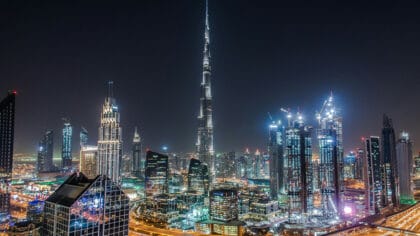The electricity we use is generated using fossil fuels like gas, coal and biomass, from nuclear power and from renewables like water, solar and wind. It’s delivered to where it’s needed over an enormous grid with 7,000 kilometres of overhead lines and 600 kilometres of underground cables.
It’s a bit like the blood vessels in our bodies or the motorway network that get us where we need to go. And like the roads, someone has to design and build the network to carry the electricity around, whilst others keep it running safely and efficiently – and make improvements – especially as the world’s working hard to increase the amount of renewable sources hooked into the network and getting closer to net zero.
We will have achieved net zero when the amount of energy we use is equal to the amount of energy we conserve.
There are several thousand people in the UK who work to keep the grid running smoothly – they come from all backgrounds and from across the UK. You could say it’s quite an electrifying career!

One of the important roles in running the grid is that of the Power Systems Engineers.
Power Systems Engineers analyse and develop the electricity transmission network, looking at where demand is and how much supply is available, to help ensure that it meets the needs of consumers both today and in the future, as well as how we can connect to and use renewable energy more efficiently. You might think all this analysis means climbing up pylons…
But it’s more likely to be working in offices or laboratories where computer simulations can be used to try out different ways of doing things.
Now most grid jobs don’t involve climbing up pylons, but some do! If you like getting hands on, there are all sorts of grid jobs maintaining the physical networks and structures that keep electricity flowing. It can be fun and greasy work! The only slight downside is working in the rain. But if you don’t want to be stuck indoors at a desk, it could be just the job for you!

We should always remember that pylons and substations are very dangerous places – and never a place to play around. Engineers are highly trained to maintain them safely.
As well as jobs that are all about the electricity, there are a wealth of other roles such as computer and digital experts who write programmes to help the network make better decisions about where to send the energy, and who can improve the technology that helps renewable generators connect to the grid. Some tech experts even create apps that help workers in the field make the right calls.
People like working on the grid for many reasons. Most enjoy puzzle solving and coming up with solutions to problems – maybe when they were younger they liked building things with Lego or solving Rubix Cubes.
Others like to make a positive change to the world – helping make greener and cleaner energy available for everyone
And back on the ground, there’s plenty of building and construction work to increase the network’s size.
Marina Ventura: Energy Explorer is made with support from Grid for Good by the National Grid







